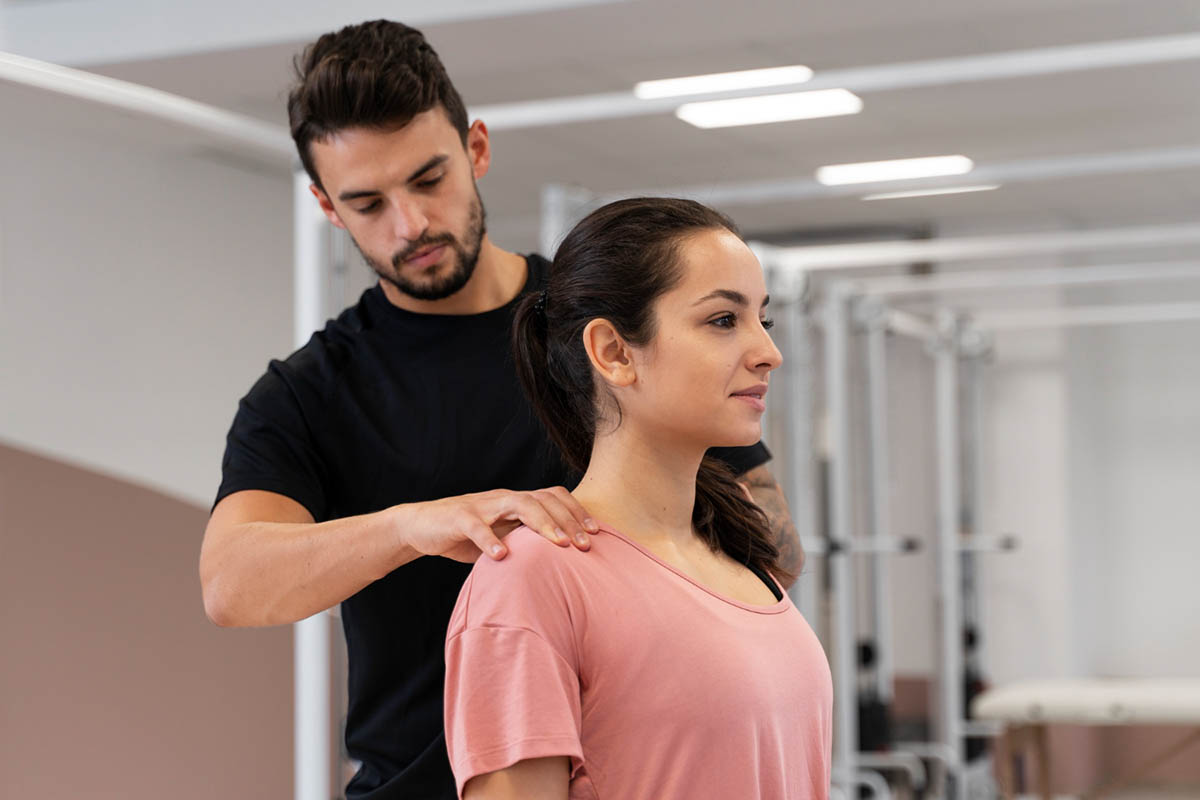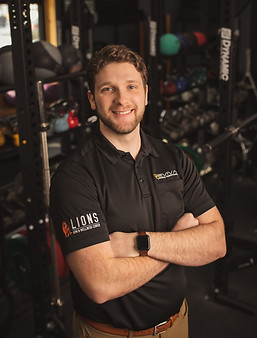Rotator cuff tendinitis is a common condition that affects many people, especially those engaged in repetitive overhead activities. It can significantly impact daily life, making simple tasks like lifting your arm or carrying groceries painful and challenging. This guide aims to provide a comprehensive understanding of rotator cuff tendinitis, how it is diagnosed, and treated, and how rotator cuff tendinitis physical therapy can play a crucial role in recovery and prevention.
What Is Rotator Cuff Tendinitis?
Rotator cuff tendinitis, also known as shoulder tendinitis, is an inflammation of the tendons in the rotator cuff. The rotator cuff is a group of muscles and tendons that stabilize the shoulder joint and allow for its wide range of motion. Overuse, repetitive overhead shoulder motions, or acute injuries can cause these tendons to become irritated or damaged, leading to pain and limited mobility. Conditions like rotator cuff tendinopathy or shoulder impingement syndrome can further complicate the shoulder region, causing more severe pain and dysfunction.
How Does It Feel with Rotator Cuff Tendinitis?
Individuals with rotator cuff tendinitis typically experience a dull ache deep in the shoulder, which may worsen at night or when performing certain movements. Pain is often felt when lifting the arm, reaching overhead, or behind the back. Weakness in the shoulder and a reduced range of motion are also common symptoms. People with rotator cuff tendinitis often find that shoulder pain disrupts their daily activities and normal range of shoulder function.
How Is It Diagnosed?
Diagnosis of rotator cuff tendinitis usually involves a combination of a physical examination and imaging tests. During the physical exam, a doctor will check for tenderness, range of motion, and strength in the shoulder. Special tests are often performed to pinpoint the exact source of pain. Imaging tests like X-rays, Magnetic Resonance Imaging (MRI), or ultrasound may be used to confirm the diagnosis and assess the extent of tendon damage. MRI is particularly useful for identifying partial tears or complete tears in the rotator cuff tendons.
How Can a Physical Therapist Help?

Physical therapists play a vital role in managing and treating rotator cuff tendinitis. They develop individualized treatment plans that include rotator cuff tendinitis physical therapy exercises to strengthen the shoulder muscles, improve flexibility, and reduce pain. Physical therapy treatment often incorporates therapeutic modalities such as ice packs, electrical stimulation, and manual therapy techniques to alleviate pain and promote healing. Education on proper body mechanics and activity modifications is also provided to prevent further injury.
Physical Therapy Exercises for Rotator Cuff Tendinitis
Common Exercises and Stretches
Doorway Stretch
The doorway stretch helps to improve flexibility and range of motion in the shoulder. Stand in a doorway with your arms at 90 degrees and lean forward gently until you feel a stretch in your shoulders. Hold for 15-30 seconds and repeat 3 times. This exercise targets the shoulder joint and the surrounding scapular muscles.
Side-Lying External Rotation
Lie on your side with the affected shoulder on top. Hold a lightweight in your top hand and keep your elbow bent at a 90-degree angle. Slowly lift the weight, rotating your shoulder outward, then lower it back down. Perform 3 sets of 10-15 repetitions. This exercise strengthens the rotator cuff muscles, particularly the infraspinatus and teres minor.
Reverse Fly
Stand with your feet shoulder-width apart, holding a light weight in each hand. Bend forward at the hips, keeping your back straight. Lift your arms to the sides until they are level with your shoulders, then lower them back down. Perform 3 sets of 10-15 repetitions. The reverse fly targets the scapular muscles and improves shoulder blade stability.
High to Low Row
Attach a resistance band to a sturdy object above shoulder height. Hold the band with one hand and pull it down towards your hip, keeping your elbow close to your body. Perform 3 sets of 10-15 repetitions on each side. This exercise engages the scapular muscles and promotes proper shoulder joint movement.
Exercise Protocol and Frequency
Consistency is key when it comes to physical therapy exercises. Perform the recommended exercises 3-4 times per week, allowing at least one day of rest between sessions. As strength and flexibility improve, the intensity and duration of the exercises gradually increase. Range of motion exercises and isometric exercises are often included in the early stages of recovery to promote joint movement without straining the injured shoulder.
How to Prevent It?
Preventing rotator cuff tendinitis involves adopting healthy habits and making modifications to your activities. Regularly perform shoulder strengthening and stretching exercises, avoid repetitive overhead motions, and ensure proper posture during activities. Using ergonomic tools and taking frequent breaks can also help reduce the risk of developing this condition. Avoiding activities that cause muscle imbalances and maintaining muscle strength in the shoulder region are crucial preventive measures.
Recovery Timeline and Expectations
How Long Does Rotator Cuff Tendinitis Last?
The duration of rotator cuff tendinitis varies depending on the severity of the condition and adherence to treatment. Mild cases may resolve within a few weeks, while more severe cases can take several months to heal. Factors like age, overall health, and the presence of other shoulder injuries (e.g., frozen shoulder, bone spurs) can affect the recovery timeline.
Rotator Cuff Tendinitis: How Long to Heal?
Healing time is influenced by the individual’s overall health, the extent of tendon damage, and the effectiveness of the treatment plan. With consistent physical therapy and proper self-care, many people experience significant improvement within 6-12 weeks. Severe cases or those involving rotator cuff tears may require a longer recovery period, and in some instances, rotator cuff surgery may be necessary for complete recovery.
How Revival Physical Therapy and Wellness Can Help

Our Expertise in Treating Rotator Cuff Tendinitis
At Revival Physical Therapy and Wellness, we specialize in treating rotator cuff tendinitis and improving your rotator cuff health using evidence-based techniques. Our experienced therapists are trained to provide comprehensive care tailored to each patient’s needs. We focus on pain management, improving shoulder function, and preventing future injuries.
Personalized Physical Therapy Programs
We develop personalized physical therapy programs that address the specific symptoms and limitations of each patient. Our goal is to alleviate pain, restore function, and prevent future injuries. Programs may include a combination of therapeutic modalities for shoulder pain or other similar conditions, functional training, and exercises targeting the rotator cuff muscles, shoulder joints, and scapular muscles.
Preventive Measures and Long-Term Care
In addition to treating existing conditions, we emphasize preventive measures and long-term care. Our therapists educate patients on maintaining shoulder health and provide strategies to avoid re-injury. This includes advice on modifying job duties, proper treatment techniques, and incorporating shoulder stretches and strengthening exercises into everyday activities.
Conclusion
Rotator cuff tendinitis can be a painful and limiting condition, but with the right approach, it is manageable. Physical therapy is an effective treatment option that can help you recover and prevent future occurrences. At Revival Physical Therapy and Wellness, we are committed to helping you achieve a pain-free and active lifestyle through personalized care and expert guidance.
FAQs
Does physical therapy help rotator cuff tendinitis?
Yes, physical therapy is a highly effective treatment for rotator cuff tendinitis. It helps to reduce pain, improve function, and strengthen the shoulder muscles to prevent future injuries. Physical therapy exercises, pain management techniques, and functional training are integral parts of the recovery process.
Is physiotherapy good for shoulder tendonitis?
Physiotherapy is beneficial for shoulder tendonitis as it focuses on relieving pain, restoring mobility, and enhancing strength through targeted exercises and manual therapy techniques. It addresses muscle imbalances, improves shoulder blade stability, and promotes proper joint movement.
How long does shoulder tendonitis take to heal with physical therapy?
When considering rotator cuff tendinitis, how long to heal is a common concern among patients. The healing time for shoulder tendonitis with physical therapy varies, but most people see significant improvement within 6-12 weeks of consistent treatment and adherence to their exercise program. Early intervention and regular activities that support shoulder health can expedite recovery and prevent recurrence.


